The LAWNERNATOR
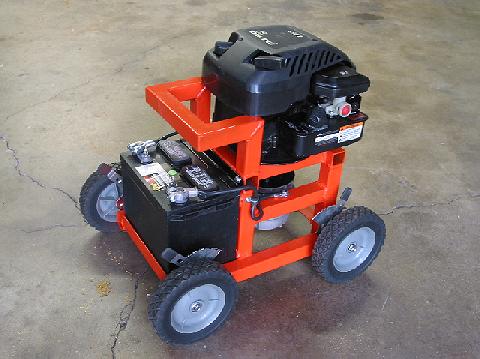
Building a lawnmower engine-powered, automotive
alternator generator set.

Building a lawnmower engine-powered, automotive
alternator generator set.
Exectutive
Summary:
Inspired by an article in QST, and my interest in power generation in
general, I built the above pictured lawnmower engine-powered alternator
genset. I determined somewhere
around halfway through construction that it's not worth it, at least in
terms of
effort, cost and amount of potential energy possible from this
unit. But once having gone that far, I wanted to complete the
unit since I had no portable source of emergency power generation, I
had a
bunch of money tied up in parts, and
following through to completion would
also serve to prove unequivocally that it wasn't worth it. :-)
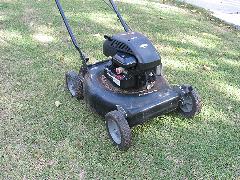 |
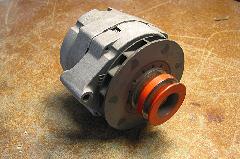 |
|
ultimate sacrifice. |
idle for nearly 10 years. |
It all started with the acquisition of a defunct lawnmower. I
already had a GM alternator languishing in the garage, an orphan of
having turned my S-10 pickup into an electric
vehicle. So I had
most of what I needed already, or so I thought. After it was all
said and done I ended up with about $150 tied up in steel, welding
supplies,
wiring, hardware and a marine battery. Not to mention the number
of hours it took to cut and weld the steel, fit the pieces and complete
it to it's finished state. If that hasn't dissuaded you by now,
read on...
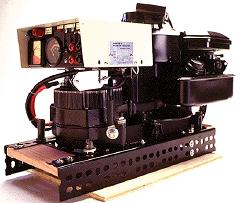 |
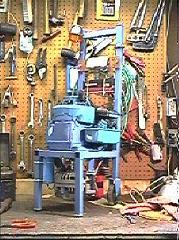 |
|
June 1999 issue of QST. |
served as my inspiration to build my own genset as an 'over-under' rather than 'side-by-side'. |
I thought it'd be easier to
transport and use a genset that was a bit taller than the QST version
which is long and flat. Once the physical configuration was
decided upon, I set about
fabricating the frame. I'm not fond of the nut and bolt method
used in the QST article so welding was my method of choice. I had
some steel on hand, and decided I would focus on sturdiness before
weight. Well, I got my wish. I used 1-1/2" square, 1/8"
thick stock. With the dimensions I ended up with this frame could
easily support a two-ton automobile, much less a 20lb engine and 8lb
alternator. But it's no more work to use this material, so that's
what I ended up with. Once the engine, alternator and battery
placement were determined, it was a relatively basic exercise to cut
and weld the pieces together. The only critical parameter was
keeping the motor shaft true to the alternator shaft, but even that is
mitigated somewhat by use of the flexible spider coupler. The
coupler
itself was already drilled and tapped for
a GM alternator shaft. This made mating the engine and alternator
quick and foolproof, compared to having to use pulleys with
sheaves,
taper-lock couplers and belts, which require some method of tensioning
adjustment.
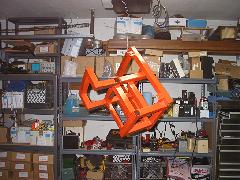 |
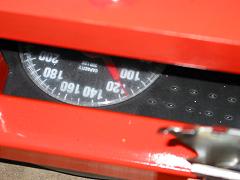 |
|
Color: Chevrolet Orange (since the alternator came out of a Chevy). |
Lawnernator tipped the scale at 115lbs! |
How it
works
After reviewing GM alternator specifications at various RPM's, as well
as lawnmower engine specifications, I estimate the Lawnernator's output
to be somewhere around 300-400W @14VDC. Not enough to do much
more than run a few lights and radios by itself, but with the deep
cycle battery attached as a load leveler, it is capable of several
times that amount during peaks. Another nice feature of the deep
cycle battery is you don't need to run the engine all the time, just
enough to keep the battery charged. Operating the unit in this
manner is actually very efficient, since the alternator will be at full
load while the engine is running, instead of just partial load were the
unit running at less than peak load. By connecting a 14VDC to
120VAC inverter, your peak power and AC current quality is limited to
the what the inverter is capable of, which can be considered additional
flexibility over an AC-only genset.

Project Page |

Home Page |

© 2006 Pane
Relief
Computer Services